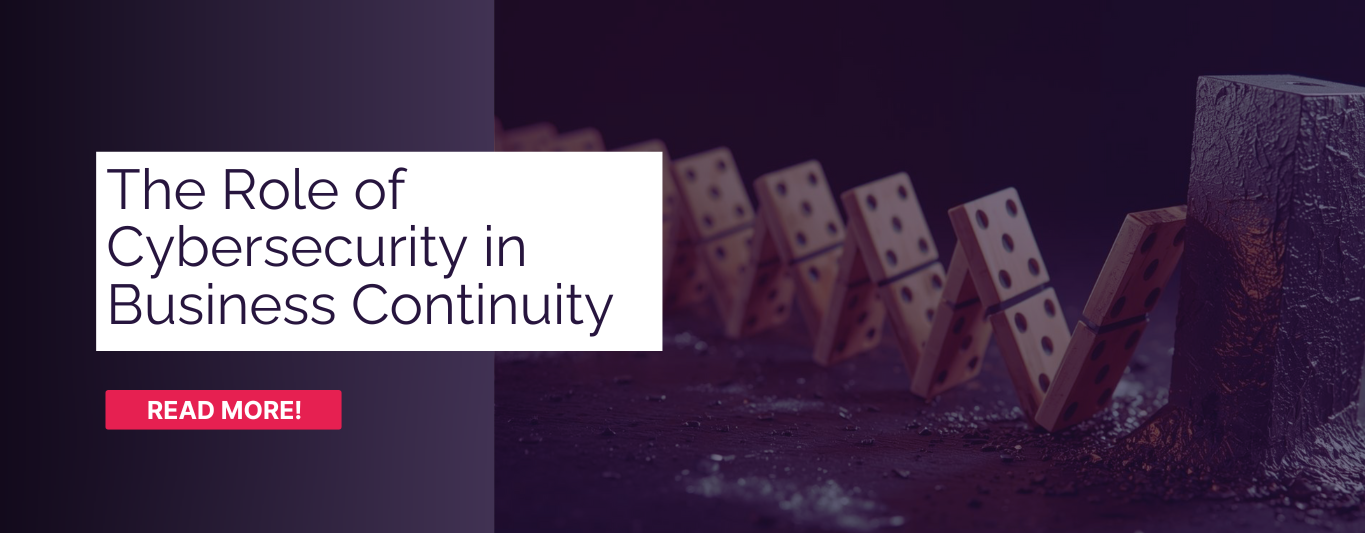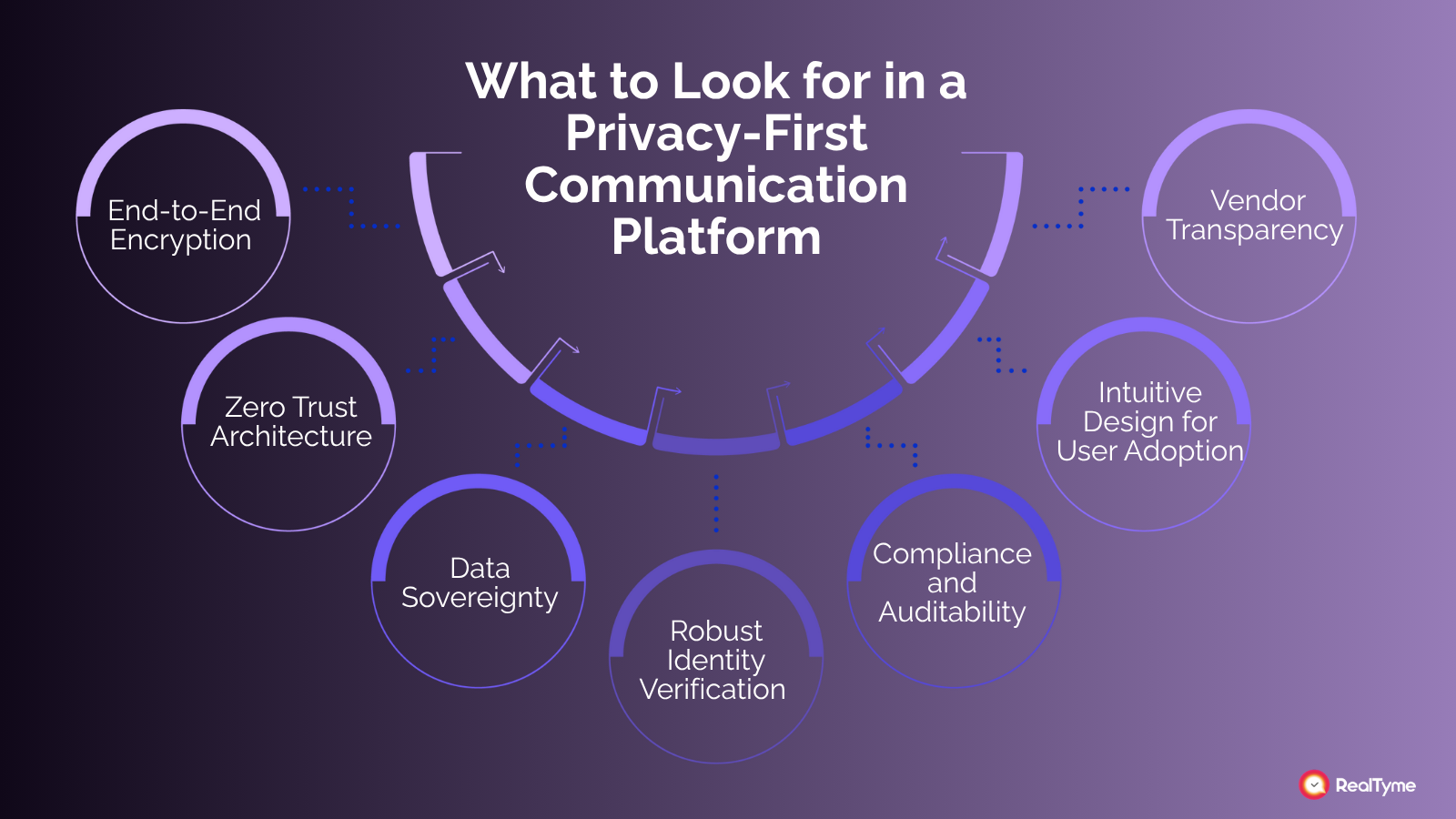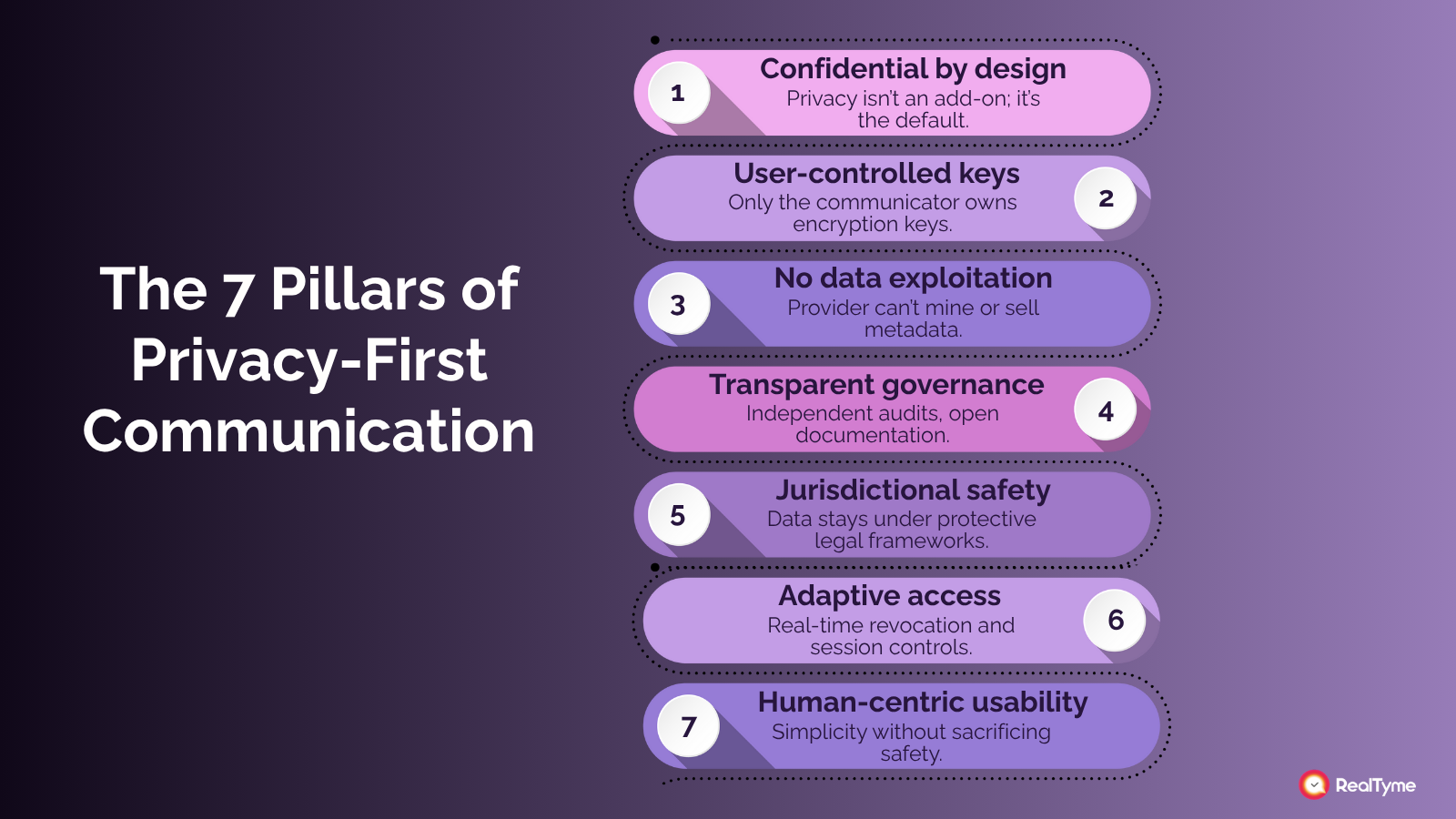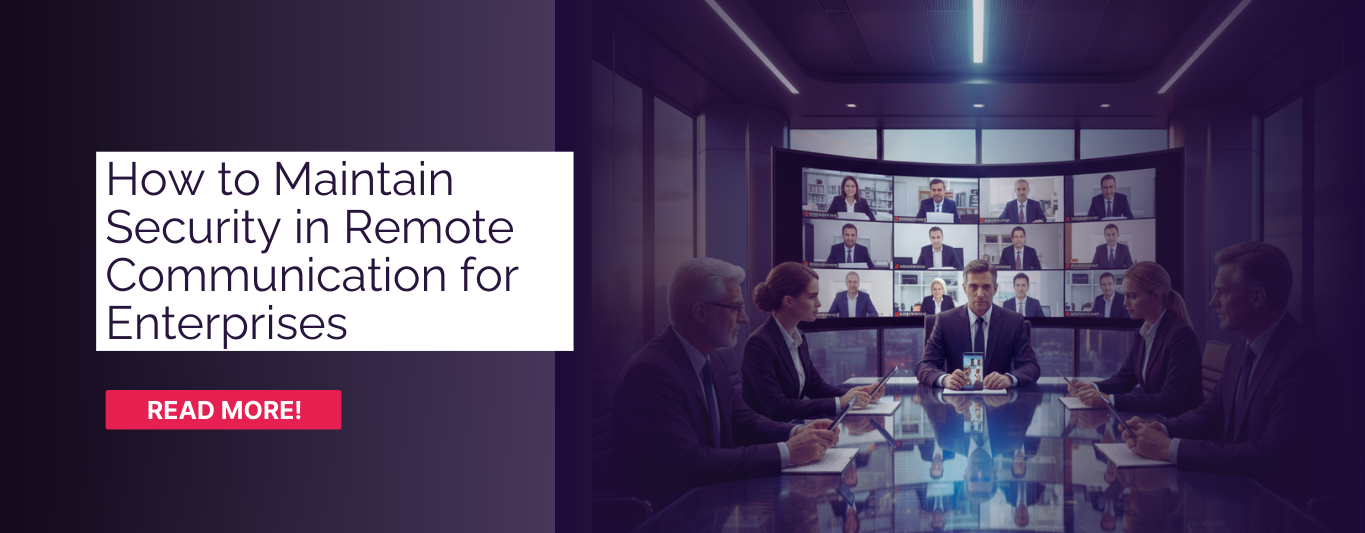The Role of Cybersecurity in Business Continuity

Picture this: your team is closing a major deal, ideas are flowing, and files are flying across chat threads and inboxes. Everything seems seamless until one unsecured message lands in the wrong hands. Suddenly, the conversation that was meant to build your business now threatens to compromise it.
That’s the reality of modern communication. Every message, call, and shared document carries both opportunity and risk. The more connected we become, the larger the attack surface grows, and cybercriminals know it. Data breaches, phishing scams, and unauthorized access attempts are now everyday threats, not rare events.
This is why secure communication has become the foundation of digital trust. It’s not about paranoia but protection. Encrypted, privacy-first communication tools give businesses control over what matters most: their ideas, their strategies, and their client relationships.
By replacing consumer-grade messaging apps with enterprise-level, secure communication platforms, organizations can ensure every discussion stays confidential, every transaction remains private, and every partnership is built on trust.
Because in a world where information is power, protecting yours is essential for survival and success.
The Hidden Dangers of Unsecured Communication Tools
When business communications happen over unsecured channels unencrypted emails, consumer messaging apps, lax verification processes they leave the door wide open for attackers. The risks are real, and the fallout can be enormous: financial loss, reputational damage, regulatory penalties, even loss of competitive edge.
Below are real-life cases that illustrate how small missteps in communication security can have massive consequences.
Real-World Examples
1. Arup: Deep-Fake Fraud and Massive Financial Loss
One of the most striking recent cases is Arup, the global engineering group.
In 2024, Arup revealed that criminals used deep-fake technology fake voices, signatures, and images to impersonate a legitimate party, tricking a staff member into authorizing transfers of funds to fraudulent accounts.
The attack cost them £25.4 million. This case highlights several dangers:
- Impersonation via deepfake or forged credentials can fool even well-trained employees.
- Even with strong cyber defenses, human and process vulnerabilities in communication remain easy targets.
- Secure verification and strict controls over any request involving financial transactions are non-negotiable.
2. Business Email Compromise (BEC) and Weak Access Controls
Many organizations in healthcare, finance, and manufacturing have been hit by attacks where insecure communication channels or weak passwords allowed attackers to hijack email accounts, send fraudulent messages, and redirect payments or leak sensitive information. For example:
- A large healthcare organization experienced a BEC attack after a weak password allowed an attacker to access an internal email account. From there, they gathered internal organizational charts and launched targeted phishing emails, eventually compromising executive email accounts.
- A packaging company lost customer payments when a phishing attack redirected payments to attacker-controlled accounts.
3. Mailing and File-Transfer Errors
Even when there isn’t a malicious actor involved, simple misconfiguration or failure to verify recipients can lead to huge leaks:
- The WeTransfer email mix-up in 2019 is a known example. Files intended for one recipient were sent to others due to a misconfiguration. Although the files were not maliciously intercepted, the exposure of unintended recipients’ files illustrated how fragile trust in “trusted tools” can be when process and recipient verification are lax.
- Another case: Outsourcing firms that handled physical or digital letter dispatch left systems exposed; confidential letters from banks, councils, etc., were indexed by Google because the system was insecure.
What These Cases Teach Us
From these examples, several key lessons emerge:
- Human vulnerability is often the weakest link. Deepfakes, spear-phishing, or seemingly legitimate requests can fool even cautious employees. Verification processes and awareness training matter.
- Tools alone aren’t enough. Using the “right” secure communication platform means little if processes, permissions, and oversight are weak.
- Incident prevention is far cheaper than the cure. The cost in money, time, trust, and regulatory risk from a breach almost always far outweighs the investment to make communication channels secure.
- Transparency and fast response help, but prevention is better. Once the damage is done, recovery and reputation management are long, risky, and costly.
How Secure Communication Builds Business Trust
Trust is the currency of modern business. It shapes every relationship from customers and partners to employees and regulators. But in an era where data leaks, phishing scams, and deepfake attacks dominate headlines, earning that trust depends on more than just strong products or promises. It depends on how securely you communicate.
Prioritizing secure communication sends a clear message: your information, ideas, and conversations are safe with us. That’s what turns ordinary business relationships into long-term partnerships.
1. Protecting Privacy Strengthens Credibility
Every conversation, whether it’s a strategic decision, a client negotiation, or a simple internal chat, holds sensitive information. Using encrypted, privacy-first communication tools ensure that only authorized participants can access this data.
This not only prevents cybercriminals from exploiting leaks but also demonstrates a company’s commitment to confidentiality and compliance. Businesses that take privacy seriously signal that they value integrity a quality that customers and partners immediately recognize and respect.
According to PwC’s Digital Trust Survey, 87% of consumers say they’ll take their business elsewhere if they don’t trust a company to handle their data responsibly.
2. Transparency Through Security Builds Confidence
Security and transparency go hand in hand. Organizations that adopt auditable, controlled, and compliant communication platforms can easily demonstrate how they protect user data and manage access.
For example, RealTyme, a Swiss secure communication platform, ensures that administrators can manage permissions and configurations without accessing user content keeping privacy intact while maintaining operational control.
This level of transparency builds confidence among clients, regulators, and partners — proving that security isn’t a marketing slogan but a built-in value.
3. Secure Communication Fosters Stronger Collaboration
When teams know their messages and files are protected, they communicate more freely and collaborate more effectively. Secure collaboration tools eliminate hesitation around sharing sensitive documents or discussing confidential matters.
This is particularly critical in industries like finance, energy, healthcare, and government, where a single breach can jeopardize entire operations. With protected channels, communication becomes not only faster but also fearless, paving the way for innovation and stronger teamwork.
4. Long-Term Trust = Competitive Advantage
Trust takes years to earn and seconds to lose. By embedding secure communication practices into daily workflows, organizations build resilience and reputation.
A brand that is consistently reliable, compliant, and transparent naturally stands out in a competitive landscape where trust is in short supply. In fact, companies recognized for strong cybersecurity practices are more likely to retain clients and attract partnerships, because security and credibility now go hand in hand.
The Bottom Line
Secure communication reinforces credibility, strengthens relationships, and positions an organization as a trusted leader in its field.
In a world where trust can’t be assumed, privacy-driven communication is what keeps it alive.
What to Look for in a Privacy-First Communication Platform

Not all communication tools are created equal. While most messaging apps claim to be “secure,” few truly live up to the promise of end-to-end protection, data sovereignty, and user privacy.
For organizations handling sensitive information, whether in government, finance, healthcare, or critical infrastructure, choosing the right communication platform is a strategic one.
A privacy-first communication platform ensures that every message, call, and file exchange remains under the control of your organization, not a third-party provider. It empowers teams to collaborate freely while staying compliant with global data protection regulations such as the GDPR, NIS2 Directive, and ISO/IEC 27001 standards.
So, what should you look for when selecting a truly privacy-driven solution?
1. End-to-End Encryption as the Foundation
Encryption is the first and most critical layer of defense. But not all encryption methods offer the same level of security.
A privacy-first platform should use true end-to-end encryption (E2EE), meaning that messages are encrypted on the sender’s device and only decrypted on the receiver’s device. No one in between, not even the service provider, can access the content.
Look for platforms that use advanced cryptographic protocols, such as Signal Protocol or Double Ratchet algorithms, which are proven to resist interception and manipulation.
Pro Tip: If a provider can “recover” your chat history or read messages on their servers, it’s not genuinely end-to-end encrypted.
2. Zero-Knowledge Architecture
As data monetization is common, a true privacy-first platform follows a zero-knowledge approach meaning the service provider has no access to your data, metadata, or encryption keys.
This model ensures your organization remains the sole owner of its communication data. Even in the case of a breach at the provider’s side, the attacker gains no readable information.
3. Data Sovereignty and On-Premises Options
Where your data is stored matters just as much as how it’s encrypted.
A privacy-first platform should give your organization full control over data residency — ideally allowing you to host data on-premises or in geographically controlled private clouds that comply with your jurisdiction’s laws.
This is particularly vital for sectors bound by strict regulations, such as defense, public administration, and energy, where cross-border data transfer could violate compliance obligations.
For example: Under the U.S. CLOUD Act, even data stored in the EU may be subject to access requests by U.S. authorities if hosted by an American provider a major concern for European entities seeking digital sovereignty. (Euractiv)
A communication platform offering Swiss or EU-based hosting options provides an additional layer of assurance, as these regions maintain some of the world’s most stringent privacy standards.
4. Robust Identity Verification and Access Controls
Unauthorized access is one of the leading causes of communication breaches. A privacy-first solution should therefore include strong identity management and multi-factor authentication (MFA) to ensure only verified users can join conversations.
Features like role-based permissions, digital identity verification, and session timeout policies help organizations minimize insider threats and unauthorized data access.
Example: RealTyme enables verified user linking and allows administrators to disable shared links remotely, effectively reducing phishing and impersonation risks on collaboration platforms — a growing issue seen across apps like Google Workspace and WhatsApp.
5. Compliance and Auditability
Privacy-first doesn’t mean opaque.
Organizations should be able to demonstrate compliance to auditors and regulators while still maintaining confidentiality.
The best platforms combine security transparency with granular audit logs — showing who accessed what and when, without revealing message content.
This balance between privacy and accountability is key to maintaining both trust and compliance readiness.
6. Intuitive Design for User Adoption
Even the most secure communication platform fails if employees don’t use it. A privacy-first solution should combine strong security with an intuitive design, making it simple for teams to chat, call, share files, and collaborate without friction.
Features like secure group channels, voice and video conferencing, file sharing, and task management, all protected by encryption, ensure that privacy doesn’t come at the cost of productivity.
After all, the goal is not only to secure communication but to make secure communication effortless.
7. Vendor Transparency and Long-Term Sustainability
Finally, trust is built on transparency. Choose a provider that clearly explains its security architecture, data handling practices, and code integrity ideally through independent security audits or open-source verification.
Long-term sustainability matters too: look for companies headquartered in privacy-protective jurisdictions with a proven track record of innovation and reliability.

The Takeaway
A privacy-first communication platform does more than protect data. It empowers organizations to operate confidently, compliantly, and collaboratively in a digital landscape defined by risk.
From end-to-end encryption to data sovereignty and zero-knowledge design, every feature should reinforce one goal: keeping your communication in your control.
When businesses invest in privacy-first solutions, they’re not just preventing breaches but building a trusted foundation for the future of secure collaboration.
Securing the Future: A Culture of Confidentiality with RealTyme
Organizations that prioritize secure communication not only protect their sensitive information but also build trust with clients, partners, and stakeholders.
RealTyme: Leading the Charge in Secure Communication
RealTyme stands at the forefront of this movement, offering a Swiss-based, privacy-first communication platform designed to safeguard your organization's most valuable asset: its data.
- End-to-End Encryption: RealTyme employs robust end-to-end encryption, ensuring that only the sender and intended recipient can access the content of communications. This approach effectively mitigates the risk of unauthorized data access.
- Data Sovereignty: With hosting options in Switzerland, RealTyme adheres to stringent data protection regulations, providing organizations with control over their data's location and compliance with local laws.
- Comprehensive Communication Suite: Beyond secure messaging, RealTyme offers encrypted voice and video calls, secure file sharing, and seamless integration with existing systems, ensuring a holistic approach to organizational communication.
The Business Case for Secure Communication
Adopting a secure communication platform like RealTyme offers several business advantages:
- Trust Building: Clients and partners are more likely to engage with organizations that demonstrate a commitment to data security.
- Regulatory Compliance: Meeting industry standards and regulations becomes more manageable, reducing the risk of legal complications.
- Operational Efficiency: Secure communication tools streamline workflows, enhancing productivity without compromising security.
Creating a culture of confidentiality is all about embedding security awareness, process discipline, and privacy-conscious behavior into the very DNA of an organization.
Every secure message, every protected file, and every verified participant contributes to building long-term trust with clients, partners, and stakeholders.
With RealTyme, businesses can confidently navigate the digital age, ensuring that every conversation, transaction, and collaboration is safe, private, and compliant.
Contact us today and start building your culture of confidentiality because a secure organization is a trusted one.




